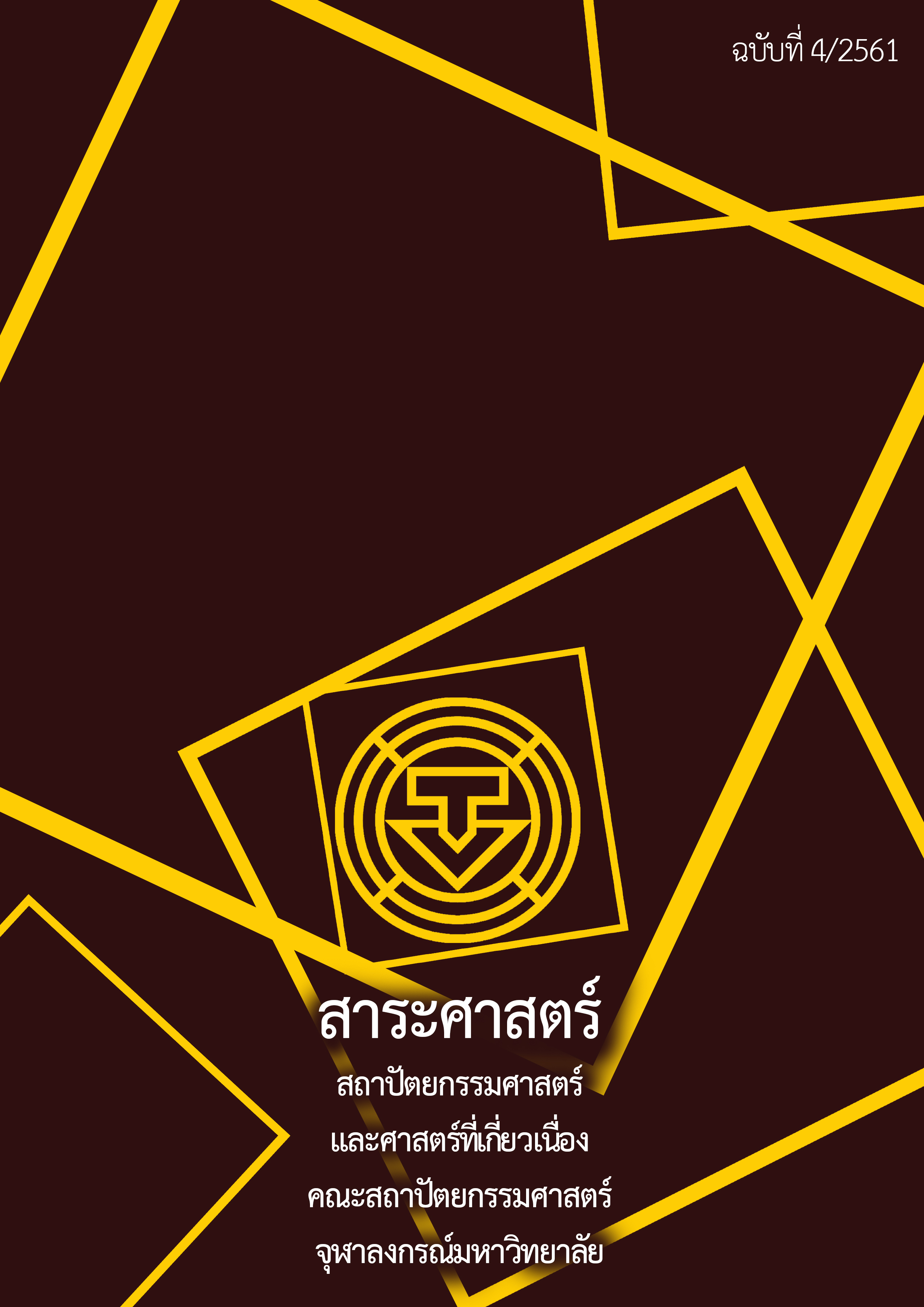Residential Changes in Living in Low-Cost Condominium Projects Constructed in 1994: A Case Study Project Nirun Residence3
Main Article Content
Abstract
Prior to 1987, roles of residential management for low-income earners belonged to the government sectors under the supervision of National Housing Authority. The year of 1994 was consider as a year that private sectors have begun the development of low-cost condominium projects for low-income and middle-income earners in both Bangkok and surrounding areas to align with government policy. One of the residential projects was Nirun Residence 3 project. The objective of this research is to study changes in household characteristics, living conditions, and issues from living in the low-cost condominium project.This will be beneficial to government sectors, project developers, condominium administrators, as well as tenants. The research is a quantitative research using data collection through survey with 379 tenants living in the condominium project. The period is divide into two phrases: the start of the residential period and the current period. This is to compare the change and analyze data through descriptive statistics: such as, frequency, percentage, mean, and standard deviation.
The research results found the number of households that begun to reside before the project started, prior to 1998 to be equivalent to 14.25 percent. Additionally, other tenants began to reside in the project from 1999 to 2003, equivalent to 15.04 percent, from 2004 to 2008, equivalent to 23.75 percent, from 2009 to 2013, equivalent to 27.70 percent, and from 2014 to 2018 that is equivalent to 19.26 percent, respectively. A consideration of the factor of change in household characteristics of the tenants found that are married, but have a higher tendency to divorce. Additionally, regarding the number of children, those who are at the start of their residential periods most likely will not have children. At present, the numbers of those who have children has visibly high-ratio increased. In addition, after consideration on the change of ownership in both periods, tenants tend to have ownership in the same direction as follow: month-to-month lessee still has the highest proportion. The next group is sublease. An analysis in changes of household characteristics also found that the proportion for month-to-month lessee has a small reduction. However, the proportion of sublease has slightly increase. Regarding issues from living in the condominium project, the biggest issues is the atmosphere of the condominium. The next issue is the utility space within the condominium as well as public utility, respectively. For the issues within the community, at present, there are four areas with the high level of issues comparing to the start of the residential period for the tenants. The first area is the increase in population density within the community. The second area is safety in the community, community hygiene, as well as parking space, community and organization management, as well as relations within the community, respectively.
Article Details
References
กรุงเทพฯ: ภาควิชาเคหการ คณะสถาปัตยกรรมศาสตร์ จุฬาลงกรณ์มหาวิทยาลัย, 2552.
คู่มือคอนโดมิเนียม. กรุงเทพฯ: บริษัท ดี.เอส.แลนด์, 2534.
ชาญณรงค์ สุทธิลักษณ์สกุล. “การใช้พื้นที่ภายในห้องพัก ประเภทอาคารชุดราคาถูก: กรณีศึกษา โครงการสินธนา แมนชั่น
(ถนนนวมินทร์) กรุงเทพมหานคร.” วิทยานิพนธ์ปริญญามหาบัณฑิต ภาควิชาเคหการ คณะสถาปัตยกรรมศาสตร์ จุฬาลงกรณ์
มหาวิทยาลัย, 2545.
นคร มุธุศรี. คู่มือคอนโดมีเนียม. กรุงเทพมหานคร: บี.บี.พริ้น, 2539.
บริษัท เอเจนซี่ ฟอร์ เรียลเอสเตท แอฟแฟร์ส AREA. “โครงการอาคารชุดพักอาศัยราคาประหยัดในกรุงเทพฯและปริมณฑล, 2530-
2540.” สืบค้น 16 ตุลาคม 2560. https://www.area.co.th/thai/contact.php.
บุญญา แกล้วทนงค์. “การบริหารอาคารชุดที่อยู่อาศัยแบบผสม: กรณีศึกษา โครงการจิวเวลรี่เทรด เซ็นเตอร์ ถนนสีลม
กรุงเทพมหานคร.” วิทยานิพนธ์ปริญญามหาบัณฑิต ภาควิชาเคหการ คณะสถาปัตยกรรมศาสตร์ จุฬาลงกรณ์มหาวิทยาลัย,
2547.
“พระราชบัญญัติอาคารชุด พ.ศ. 2522.” ราชกิจจานุเบกษา. เล่ม 67 ตอนที่ 29พ. หน้า 4. (2522, 30 เมษายน).
Cooke S. “Introduction to Marriage and the Family.” Accessed October 16, 2017. https://brewminate.com/social-
institutions-family-religion-and-education.
Harris, S. L. “Treatment of Family Problems in Autism.” In Behavioral Issues in Autism, 161-175.
Boston, MA.: Springer, 1994.
Sherkat, D.E. “Assessing Religious Dynamics.” In Religion, Families, and Health: Population-Based Research in
the United States, Christopher G. Ellison, Robert A. Hummer, eds, 406. New Brunswick, NJ.: Rutgers
University Press, 2010.
Strong, Bryan and Christine Devault. The Marriage and Family Experience. St. Paul, NY: West Publishing, 1992.
Teixeira de Melo, A. and M, Alarcão. “Beyond the Family Life Cycle: Understanding Family Development in the
Twenty-First Century through Complexity Theories.” Family Science 5, 1 (2014): 52-59.
Wells, W. D. and G., Gubar. “Life Cycle Concept in Marketing Research.” Journal of Marketing Research (1966):
355-363.


